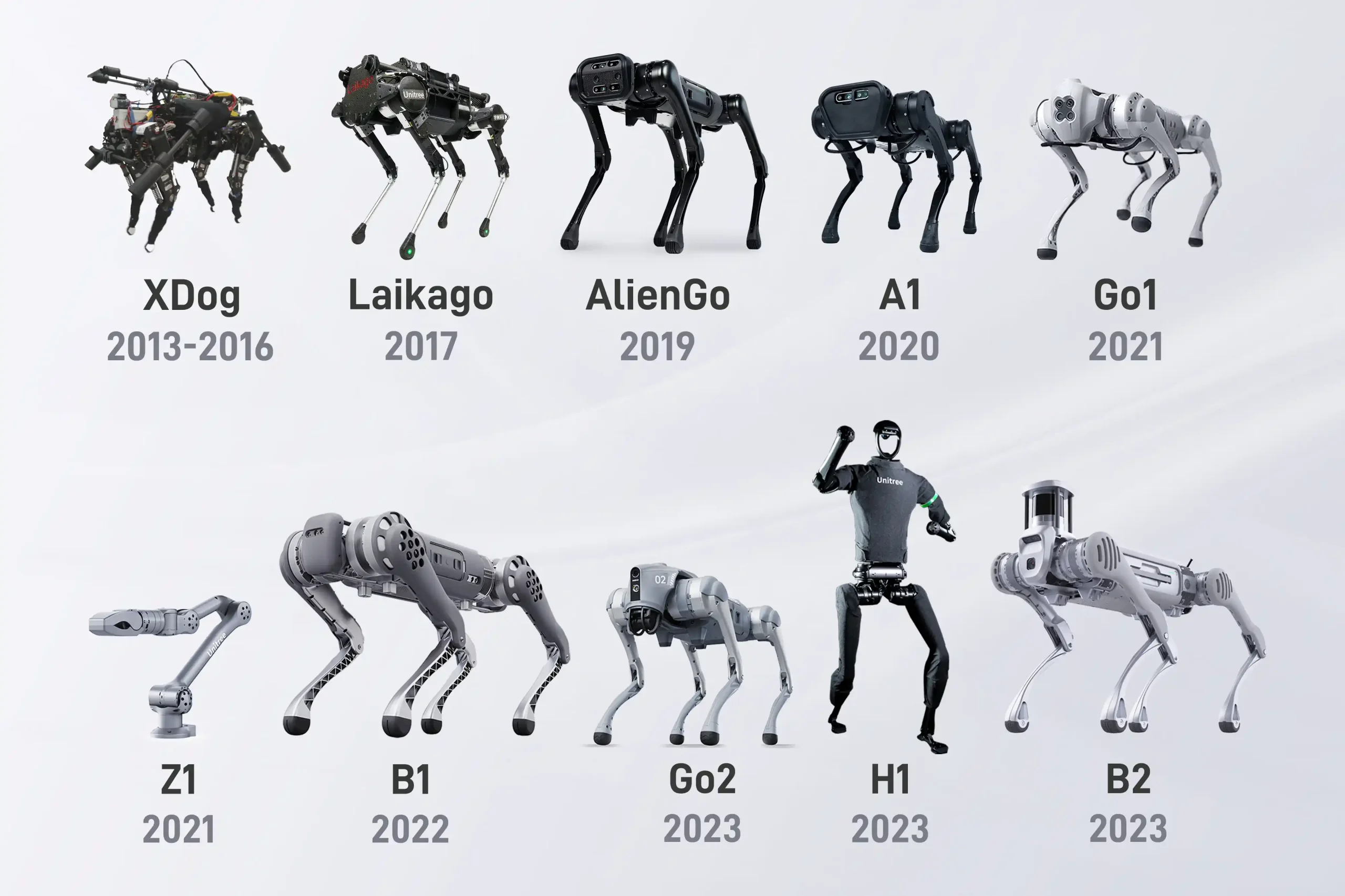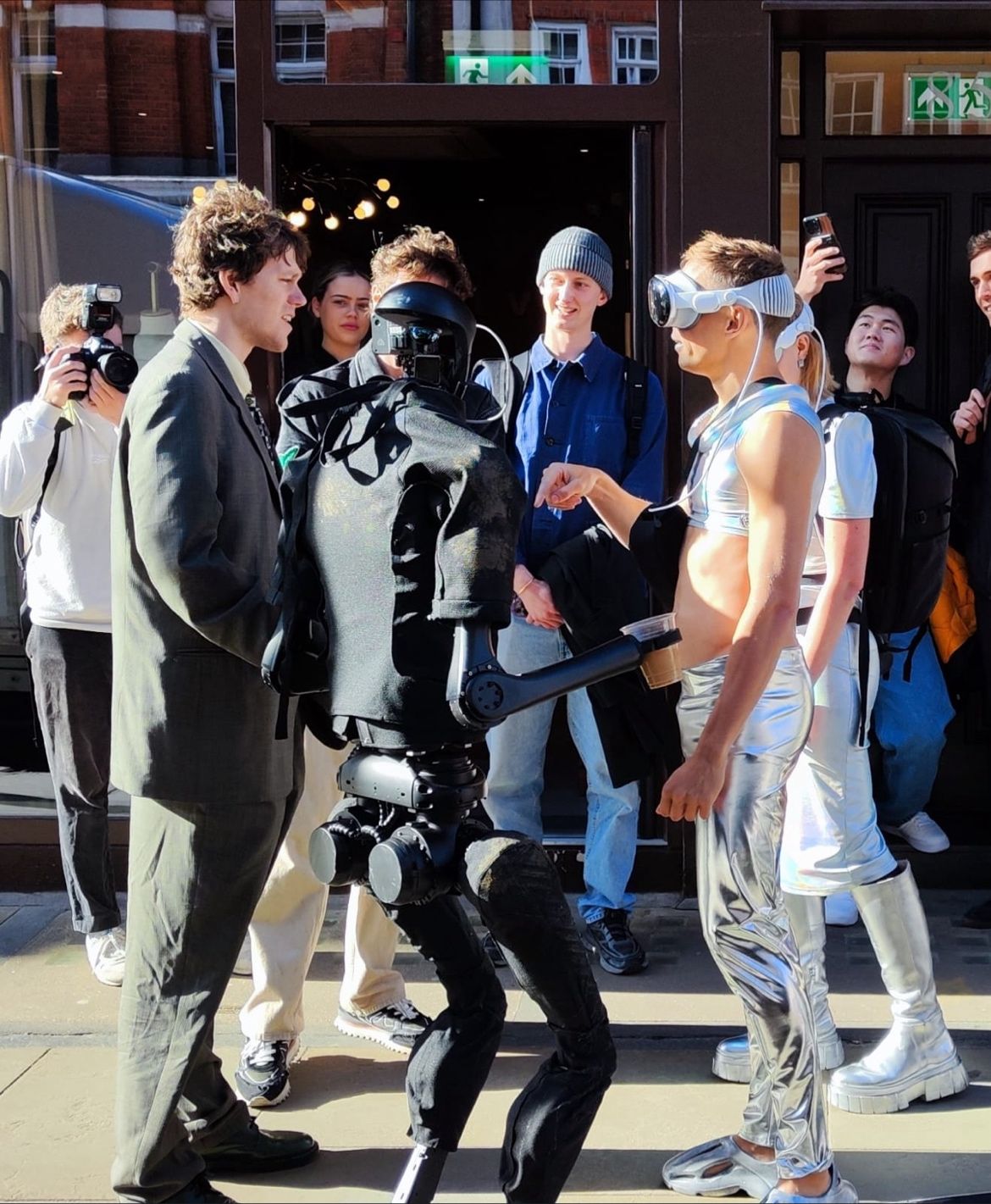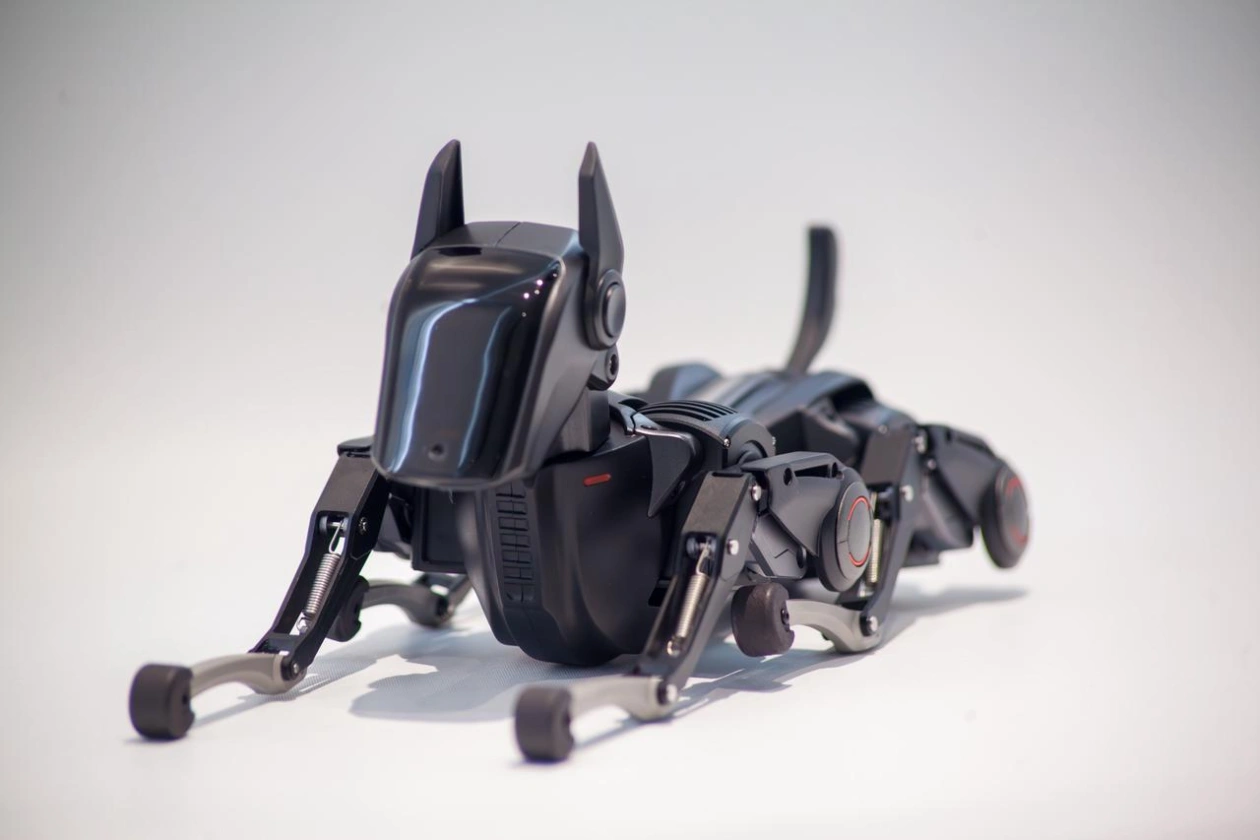
In the rapidly evolving landscape of robotics, advancements in artificial intelligence (AI) and biomechanical engineering are reshaping industries and everyday life. Among these innovations, robotic guide dogs have emerged as a transformative solution for individuals with visual impairments, offering companionship and functional support. This article explores the cutting-edge developments in robotic technology by Chinese companies such as Unitree Robotics and their competitors, highlights recent breakthroughs like the side-flipping robot, and discusses how these innovations align with broader trends such as “cloud pet ownership.”
The Pioneering Role of Unitree Robotics in Robotic Innovation
Unitree Robotics, a leader in quadruped and humanoid robotics, has consistently pushed the boundaries of what robots can achieve. Founded in 2017, the company has become synonymous with high-performance robotic dogs like the Go1 and Go2, which combine agility, affordability, and advanced motion control algorithms. These robots are designed for diverse applications, from industrial inspections to household companionship.
 A landmark achievement in 2025 was Unitree’s G1 humanoid robot, which became the world’s first to perform a side-flip—a feat requiring exceptional balance, torque, and real-time kinematic adjustments. This milestone, showcased in a viral video, demonstrated the robot’s ability to execute complex maneuvers on narrow footholds like balance beams and plum-blossom piles. The G1’s success builds on Unitree’s earlier breakthroughs, such as the H1 humanoid robot that performed a backflip in 2024, underscoring the company’s dominance in motion control systems.
A landmark achievement in 2025 was Unitree’s G1 humanoid robot, which became the world’s first to perform a side-flip—a feat requiring exceptional balance, torque, and real-time kinematic adjustments. This milestone, showcased in a viral video, demonstrated the robot’s ability to execute complex maneuvers on narrow footholds like balance beams and plum-blossom piles. The G1’s success builds on Unitree’s earlier breakthroughs, such as the H1 humanoid robot that performed a backflip in 2024, underscoring the company’s dominance in motion control systems.
Unitree’s quadruped robots also excel in rugged environments. The B2-W industrial robot dog, for instance, navigates steep terrain, crosses water, and carries payloads up to 120 kg, making it invaluable for tasks like power grid inspections and disaster response. These capabilities highlight how robotic dogs are transitioning from niche industrial tools to versatile companions capable of supporting vulnerable populations, including the visually impaired.
Competing Technologies: Hengzhi Future and the Rise of Consumer Robotics
 While Unitree dominates the industrial and high-performance robotics market, companies like Hengzhi Future (Chongqing) are carving out niches in consumer-facing applications. Their Sirius robotic dog, unveiled at the 2025 National People’s Congress, exemplifies this trend. Designed as a “smart companion,” Sirius leverages AI to interpret voice commands, dance, and interact with users through AR/VR interfaces. This focus on emotional engagement and accessibility positions Sirius as a contender in the race to develop robots for everyday households.
While Unitree dominates the industrial and high-performance robotics market, companies like Hengzhi Future (Chongqing) are carving out niches in consumer-facing applications. Their Sirius robotic dog, unveiled at the 2025 National People’s Congress, exemplifies this trend. Designed as a “smart companion,” Sirius leverages AI to interpret voice commands, dance, and interact with users through AR/VR interfaces. This focus on emotional engagement and accessibility positions Sirius as a contender in the race to develop robots for everyday households.
However, challenges remain. High costs, technical limitations in autonomy, and public skepticism about human-robot interaction hinder widespread adoption11. For instance, while Unitree’s robots incorporate large language models (LLMs) for voice control, they still require human oversight in complex scenarios. These limitations underscore the need for continued innovation—particularly in sensor accuracy and adaptive algorithms—to make robotic guide dogs reliable enough for real-world use.
Robotic Guide Dogs: A Vision for Inclusive Technology
The concept of robotic guide dogs represents a convergence of mobility assistance and AI-driven companionship. Traditional guide dogs require years of training and incur significant costs, whereas robotic alternatives could offer scalable, customizable solutions. Unitree’s Go2 robotic dog, for example, already demonstrates capabilities like obstacle avoidance, voice interaction, and terrain adaptability—features that could be refined for guide dog applications.
For individuals with low vision, a robotic guide dog could provide:
Real-time navigation using LiDAR and 3D SLAM (simultaneous localization and mapping) technology to detect obstacles.
Voice-guided assistance integrated with navigation apps for route planning.
Emergency response features, such as alerting caregivers during falls or medical emergencies.
These functionalities align with existing industrial applications. For example, Unitree’s robots are already deployed in power stations for inspections, where they autonomously navigate hazardous environments—a skill transferable to guiding users through urban settings.
Industry Challenges and the Path Forward
Despite the promise of robotic guide dogs, significant hurdles persist. Goldman Sachs’ 2025 report cautions that humanoid and service robots remain years away from handling “generalized tasks” due to hardware and software limitations. Unitree’s H1 humanoid robot, for instance, has only 19 degrees of freedom (DoF), restricting its ability to perform delicate manipulations like opening doors or handling objects. Similarly, while quadruped robots excel in mobility, their AI systems lack the contextual awareness needed for dynamic social environments.
Cost is another barrier. High-end robots like Tesla’s Optimus and Unitree’s H1 carry price tags exceeding $70,000, placing them out of reach for most consumers. However, economies of scale and advancements in domestic supply chains—such as China’s growing ecosystem of harmonic drive and sensor manufacturers—could drive down costs over time.
The Broader Context: Cloud Pet Ownership and Digital Companionship
As robotics redefines physical assistance, digital trends like cloud pet ownership are reshaping emotional connections with technology. Platforms like Zoomax enable users to interact with virtual pets via AR, offering a glimpse into a future where robotic and digital companions coexist. While distinct from functional robots like guide dogs, this trend reflects a growing appetite for AI-driven interactions—a demand that robotics companies could leverage to enhance user engagement.
Conclusion
The intersection of robotics and assistive technology holds immense potential, with companies like Unitree Robotics leading the charge in China’s innovation ecosystem. While challenges in cost, autonomy, and public acceptance remain, the progress in humanoid and quadruped robots—exemplified by feats like the G1’s side-flip—signals a future where machines seamlessly augment human capabilities. By aligning SEO strategies with authoritative, experience-driven narratives, businesses can position themselves at the forefront of this technological revolution, bridging the gap between cutting-edge innovation and societal need.
References
Goldman Sachs. (2025, February 27). Research on Unitree Robotics: The inflection point of humanoid robot technology remains unclear. Tencent News. https://new.qq.com/rain/a/20250227A08Y6J00
Hengzhi Future. (2025, March 4). “Chongqing-made” robotic dog debuts at the 2025 National People’s Congress. Tencent News. https://new.qq.com/rain/a/20250304A085TK00
Unitree Robotics. (2024, December 24). Unitree’s robotic dog unlocks new skills: Mountain climbing, water crossing, and side flips. Sohu. https://www.sohu.com/a/841231639_120988576
Unitree Robotics. (2025, March 19). Unitree’s humanoid robot achieves a global first: Side-flip! Robotic dogs sell out. Tencent News. https://new.qq.com/rain/a/20250319A05TCP00
Zhang, Y. (2025, March 20). Live from 2025 AWE: Humanoid robots shake hands, robotic dogs backflip. Tencent News. https://new.qq.com/rain/a/20250320A09N6C00
Zhou, L. (2025, March 7). Unitree’s “humanoid robots and robotic dogs” become new stars in exhibition marketing. Tencent News. https://new.qq.com/rain/a/20250314A08CMM00

